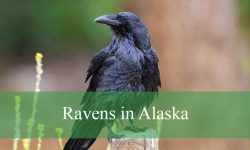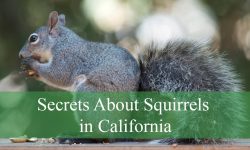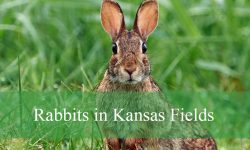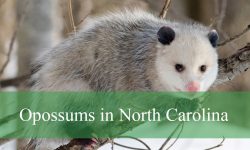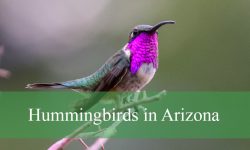Texas is home to one of the largest populations of wild hogs in the United States, with numbers estimated to exceed 2.6 million as of 2020. These wild hogs, also known as feral pigs, have spread widely across the state thanks to their adaptability, intelligence, and high reproductive rates. Their presence is felt in forests, grasslands, wetlands, and even near agricultural areas, making them one of Texas’ most recognizable and resilient mammals.
While often regarded as pests due to the damage they cause to crops, property, and native ecosystems, wild hogs are also fascinating creatures from an ecological perspective. They provide unique opportunities for hunting, wildlife observation, and studying animal behavior. Gaining a deeper understanding of their types, physical features, behaviors, feeding habits, and habitats is essential for managing populations effectively and safely appreciating these remarkable animals in the wild.
Types of Wild Hogs in Texas
Feral Hogs (Sus scrofa)
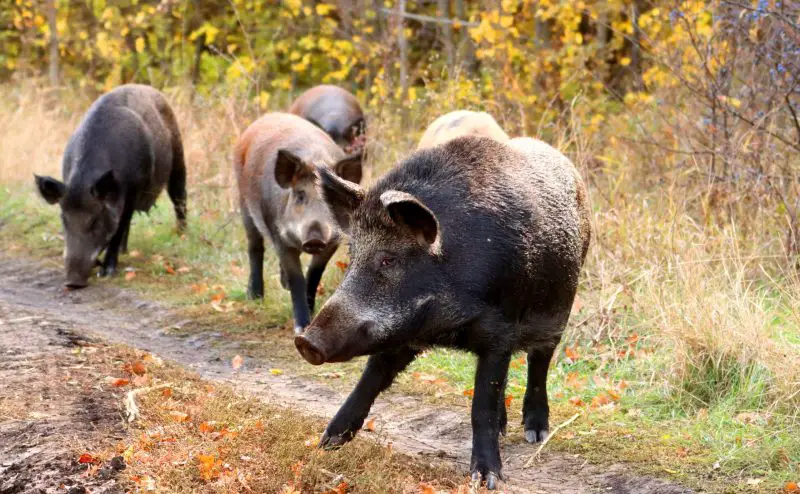
Feral hogs are the most common type of wild hog in Texas. Originally domesticated pigs that escaped or were released into the wild, these animals quickly adapted to natural habitats. They are descendants of European and Asian pigs, and over time they have developed the traits necessary for survival in the wild.
Adult feral hogs typically weigh between 100 and 200 pounds, although exceptionally large males can reach up to 400 pounds. Their height at the shoulder ranges from 2 to 3 feet, and their body length is usually 4 to 6 feet. Feral hogs display a variety of coat colors, including black, brown, reddish, and sometimes spotted or striped patterns. Their coarse bristles, especially along the back, help protect them from harsh vegetation and predators.
Behaviorally, feral hogs are highly adaptable and resilient. They live in groups called sounders, usually consisting of sows and their young, while adult males are generally solitary except during mating season. These groups provide protection and facilitate social learning. Feral hogs are omnivorous and opportunistic, consuming roots, tubers, fruits, insects, small mammals, and occasionally livestock. They are particularly skilled at rooting, using their strong snouts to dig for underground food, which also significantly impacts the environment by disturbing soil and vegetation.
Eurasian Wild Boar Hybrids
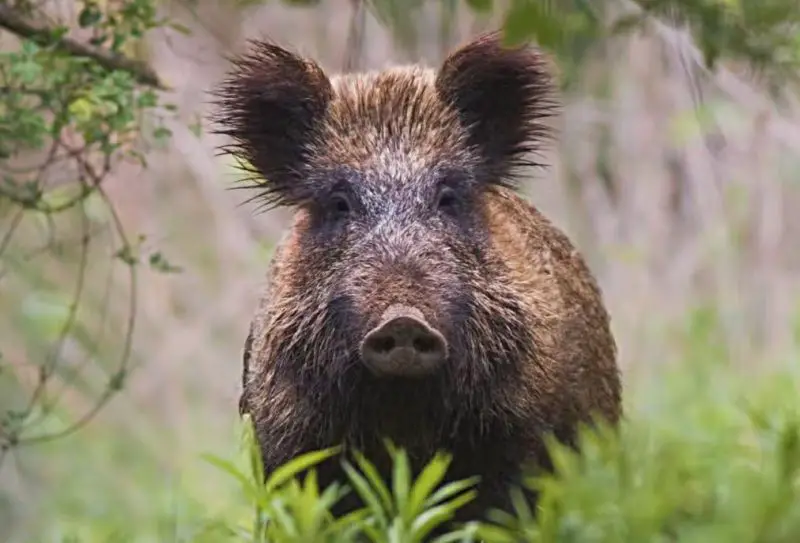
Many wild hogs in Texas are hybrids between feral pigs and Eurasian wild boars. These hybrids often exhibit enhanced physical traits compared to standard feral hogs. They tend to be larger, more muscular, and have longer, sharper tusks. Their coats are typically denser, darker, and more uniform, which provides superior camouflage in wooded environments. A distinct shoulder hump is often noticeable, giving them a more robust appearance.
Eurasian hybrids display bolder behavior and may be more aggressive when confronted, making them potentially dangerous to humans and other animals. These hogs have similar feeding patterns to feral hogs but can exploit tougher vegetation and larger prey items. They also tend to travel greater distances in search of food, which enables them to colonize diverse habitats ranging from forests to grasslands and agricultural areas.
Razorback Hogs
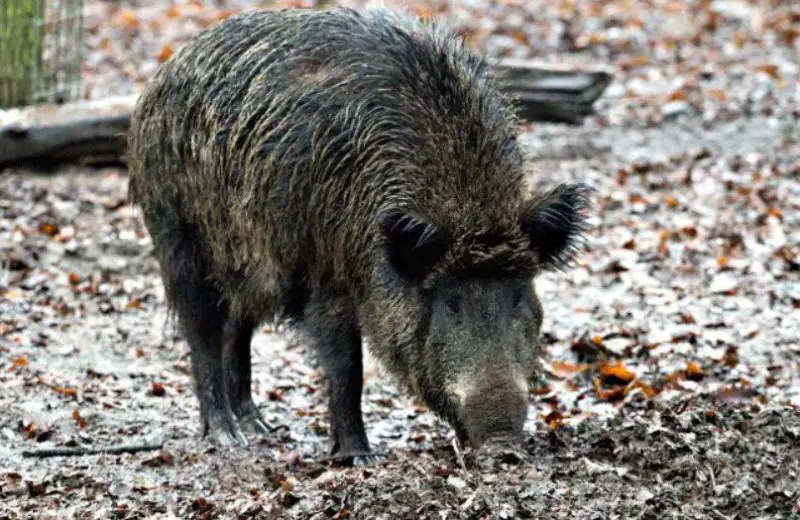
The term “razorback” is often used in Texas to describe wild hogs with prominent dorsal ridges formed by stiff, erect bristles. While they may be feral pigs or hybrids, razorbacks are distinguished by this physical characteristic and their relatively sharper tusks.
Razorbacks are typically nocturnal and elusive, preferring dense vegetation and areas that provide cover. They are more active at night to avoid predators and human interaction. Razorbacks feed on a wide array of foods, including roots, nuts, berries, insects, small vertebrates, and occasionally amphibians. Despite their tendency to disrupt vegetation through rooting, they play a role in ecosystem engineering by aerating the soil and dispersing plant seeds.
Physical Identification and Characteristics
Wild hogs in Texas vary greatly in size and appearance. On average, they stand 2 to 3 feet tall at the shoulder, with lengths of 4 to 6 feet. Males typically grow larger than females and have more pronounced tusks, which can curve several inches outward and are used for defense and rooting. Their ears are small and pointed, while their tails are thin and end with a tuft of hair.
Coat coloration ranges from solid black, brown, or reddish tones to various spotted patterns. The coarse bristles on their backs provide protection and help regulate temperature. Observers should note their broad, flat snouts, designed for digging and detecting subterranean food sources. Tracks are also a useful identification tool: wild hogs have four toes with two prominent central hooves, often leaving a distinctive cloven footprint.
Behavior and Social Structure
Wild hogs are highly intelligent and display complex social behaviors. Female-led groups, or sounders, usually consist of 5 to 20 individuals. These groups provide protection for the young and enable cooperative behaviors such as collective foraging and alerting members to danger. Adult males are mostly solitary, roaming widely in search of mates or new territory. Communication among hogs is rich, including grunts, squeals, and body posturing to indicate alarm, aggression, or social submission.
Hogs are highly adaptable in their movement and activity patterns. They are mostly nocturnal but may be seen during early morning or late evening hours, especially in cooler seasons. Excellent swimmers, wild hogs can cross rivers or swamps to access food and water. They demonstrate remarkable memory and problem-solving skills, remembering food locations, escape routes, and patterns of human activity.
Diet and Feeding Patterns
Wild hogs are omnivores with opportunistic feeding habits. Their diet consists of plant material, such as acorns, roots, tubers, grasses, and berries, as well as animal matter including insects, worms, small mammals, and bird eggs. In areas with human activity, they may consume agricultural crops, garden produce, and even pet food.
Rooting is their signature feeding behavior. Using their strong snouts, hogs dig into soil, turning over the ground to find edible roots or invertebrates. While this behavior disrupts the natural landscape and crops, it can also contribute positively by aerating soil and dispersing seeds. Seasonal variation affects their diet: during wet seasons, they consume more plant matter, while in dry seasons they may rely more on small animals or carrion.
Predation and Threats
While wild hogs are robust and resilient, they are not immune to predation. In Texas, predators such as coyotes, bobcats, and mountain lions can occasionally target young or weak hogs. Human hunting is the primary population control measure, including both recreational and professional efforts.
Wild hogs’ aggressive nature and tusks allow them to defend themselves effectively, which reduces predation risk. They are also highly alert and have keen senses of smell and hearing, enabling rapid detection of threats. Despite this, high reproductive rates—females can give birth to 4 to 12 piglets per litter, sometimes twice a year—ensure that populations remain substantial.
Habitat and Distribution in Texas
Wild hogs inhabit nearly every region of Texas. They prefer areas offering food, water, and shelter, such as dense forests, brushy river bottoms, grasslands, and agricultural lands. East Texas, with its Piney Woods and hardwood forests, offers excellent cover and abundant food sources. The coastal plains and central Texas regions also support high hog densities due to water availability and agricultural crops.
They are adaptable to a range of environmental conditions, from wet marshes to dry, arid regions. Their ability to thrive in diverse habitats makes them one of the most successful invasive mammals in the state. Hogs often concentrate near water sources such as rivers, ponds, and wetlands, which are crucial for drinking, wallowing, and thermoregulation.
Fun Facts About Wild Hogs
Wild hogs are surprisingly intelligent, with problem-solving skills and the ability to remember locations and escape routes. Their tusks continuously grow throughout their lives, requiring wear from rooting and foraging. Sounders demonstrate cooperative behavior, and females often protect each other’s young.
While considered pests, wild hogs contribute ecologically by aerating soil, dispersing seeds, and controlling insect populations. In Texas, they are valued as game animals for hunting, and their meat is often used for consumption. Interestingly, they can adapt quickly to human presence, sometimes approaching settlements in search of food, highlighting their remarkable flexibility.
Best Viewing Spots in Texas
Observing wild hogs requires understanding their habits and preferred habitats. East Texas, particularly the Piney Woods region, provides excellent opportunities due to dense forests and abundant water sources. River bottoms and wetland areas in central Texas, including sections along the Brazos, Colorado, and Trinity rivers, attract hogs seeking water and cover.
Private ranches and wildlife preserves often allow controlled observation and hunting opportunities. While wild hogs are elusive, dawn and dusk are prime times for spotting them. Signs of activity, such as tracks, rooting areas, and wallows, indicate recent presence and increase chances of sightings. Night-vision or thermal imaging equipment can also aid observation, especially since hogs are largely nocturnal.
Seasonal Patterns and Observation Tips
Wild hogs’ activity varies seasonally. Cooler months, when natural food sources are less abundant, prompt hogs to forage more openly. Early morning and late evening are ideal times to observe them. During the breeding season, males become more mobile and aggressive, increasing their visibility.
When planning observation, maintaining a safe distance is crucial. Wild hogs can be unpredictable, and adult males can be particularly dangerous if threatened. Observers should look for rooting signs, tracks, wallows, and vegetation damage as indirect indicators of hog presence, which often precede actual sightings.
Human Interaction and Management
In Texas, wild hogs are managed both as game animals and as invasive pests. Hunting, trapping, and exclusion techniques are used to control populations and prevent agricultural damage. Ranchers and landowners often implement fencing, baited traps, and aerial hunting to mitigate the economic impact of wild hogs.
For wildlife enthusiasts, understanding hog behavior reduces risks during observation. Avoiding sudden movements, keeping a safe distance, and respecting their territory are essential. Awareness of local hunting seasons and private property regulations ensures a safe and responsible experience when encountering wild hogs in Texas.
Conclusion
Wild hogs in Texas are fascinating, adaptable, and resilient creatures. From common feral hogs to Eurasian hybrids and razorbacks, these animals exhibit a remarkable range of physical traits and behaviors. Their intelligence, social structure, feeding habits, and ability to thrive in diverse habitats make them a compelling subject for study and observation.
While they pose significant challenges to agriculture and ecosystems, wild hogs also play ecological roles and provide opportunities for hunting and wildlife viewing. Understanding their types, habits, habitats, and seasonal patterns is essential for anyone interested in observing or managing these animals safely. With preparation and knowledge, spotting wild hogs in Texas can be a memorable and educational wildlife experience.
FAQs About Wild Hogs in Texas
What are the most common types of wild hogs in Texas?
Texas is home to several types of wild hogs, including feral hogs (Sus scrofa), Eurasian wild boar hybrids, and razorbacks. Feral hogs are the most widespread, originating from escaped domestic pigs. Eurasian hybrids are larger and more muscular, while razorbacks are distinguished by their stiff dorsal bristles and sharp tusks.
How can I identify a wild hog in the wild?
Wild hogs vary in size, color, and coat patterns. Adults typically weigh between 100 and 200 pounds, though some males can reach 400 pounds. They have broad, flat snouts, erect bristles along the back, small pointed ears, and a thin tail with a tuft of hair. Tusks are more prominent in males and curve outward for defense and rooting.
What do wild hogs eat in Texas?
Wild hogs are omnivores and opportunistic feeders. Their diet includes acorns, roots, tubers, grasses, berries, insects, worms, small mammals, bird eggs, and occasionally livestock. They are known for their rooting behavior, which allows them to uncover underground food sources.
Where are the best places to see wild hogs in Texas?
East Texas, especially the Piney Woods region, is ideal for spotting wild hogs due to dense forests and water sources. River bottoms and wetlands along the Brazos, Colorado, and Trinity rivers also attract them. Private ranches with controlled observation or hunting opportunities are another good option.
Are wild hogs dangerous to humans?
While generally avoiding humans, wild hogs can be aggressive if threatened or cornered, particularly adult males. It is important to maintain a safe distance, avoid sudden movements, and respect their territory when observing them in the wild.
When are wild hogs most active?
Wild hogs are primarily nocturnal but can also be seen during early morning or late evening. Cooler months and drought periods may push them into more open areas in search of food, making sightings more likely. Breeding season increases male activity, which may make them more visible.
How do wild hogs affect the environment?
Wild hogs significantly impact the environment through rooting, which can damage vegetation and crops. However, they also aerate soil, disperse plant seeds, and control insect populations. Their presence in ecosystems is a mix of ecological disruption and contribution.
How are wild hog populations managed in Texas?
Wild hogs are managed through hunting, trapping, and exclusion techniques. Landowners use fencing, baited traps, and aerial hunting to control populations and minimize agricultural damage. Population control is essential due to their high reproductive rate and invasive nature.
Can I legally hunt wild hogs in Texas?
Yes, wild hogs are considered a game animal in Texas. Hunting regulations vary by region and land ownership. Some areas allow year-round hunting, while others have specific seasons or require permits. Always check local regulations before hunting.
Why are wild hogs considered an invasive species?
Wild hogs reproduce rapidly, are highly adaptable, and compete with native wildlife for food and habitat. Their rooting behavior disrupts soil, vegetation, and crops, making them one of the most destructive invasive mammals in Texas and across the United States.

